LEI Jiaqianga,1, DU Mingyuana,2,*, ZHOU Naa, WANG Yongdonga, YOU Yuana
a. National Engineering Technology Research Centre for Desert-Oasis Ecological Construction, Xinjiang Institute of Ecology and Geography, Chinese Academy of Sciences, Urumqi, 830011, China
Abstract: The African Great Green Wall Initiative (GGWI) is an ambitious transcontinental program aimed at halting desertification, restoring degraded lands, and improving livelihoods across the Sahel region. Despite its transformative vision, the initiative has encountered technical, financial, and governance challenges. In recent years, China’s involvement—drawing from its extensive experience with the Three-North Shelterbelt Program and integrated desertification control—has introduced a new model of South-South cooperation. Through adaptive technologies, capacity building, and co-developed community-based strategies in Mauritania, Ethiopia, and Nigeria, Chinese partners have provided tangible contributions to Africa’s ecological restoration. This article documents these collaborative stories and argues that China’s ecological governance framework is shaping a new paradigm for global environmental development.
Keywords: African Great Green Wall, desertification control, China-Africa cooperation, Three-North Shelterbelt, ecological restoration, sustainable livelihoods, global environmental governance
Cite this article as: LEI Jiaqiang, DU Mingyuan, ZHOU Na, WANG Yongdong and YOU Yuan. (2025) Greening the Edge of the Sahara: China’s Approach to the African Great Green Wall. Bulletin of the Chinese Academy of Sciences, 39, 2025002. DOI: https://doi.org/10.1051/ bcas/2025002
1. The African Great Green Wall: A Vision Amidst Challenges
Stretching across 11 countries on the southern fringe of the Sahara Desert, the African Great Green Wall (GGWI) was launched in 2005 as a visionary response to land degradation and desert encroachment. The plan called for a 15-kilometer-wide green belt spanning over 7,775 kilometers from Senegal in the west to Djibouti in the east. Its targets for 2030 are equally bold: to restore 100 million hectares of land, sequester 250 million tons of carbon, and create 10 million green jobs (UNCCD, 2020).
Yet, progress has been uneven. By 2021, only 4% of the land restoration target had been met, due to limited access to funding, fragmented coordination among stakeholders, and the lack of locally adaptable technologies (Goffner et al., 2019; UNCCD, 2020).
Against this backdrop, China’s participation in GGWI cooperation represents a turning point. Drawing on its hard-won lessons from battling desertification at home, China is helping African nations localize technologies and co-develop ecological restoration strategies that address both environmental and social dimensions.
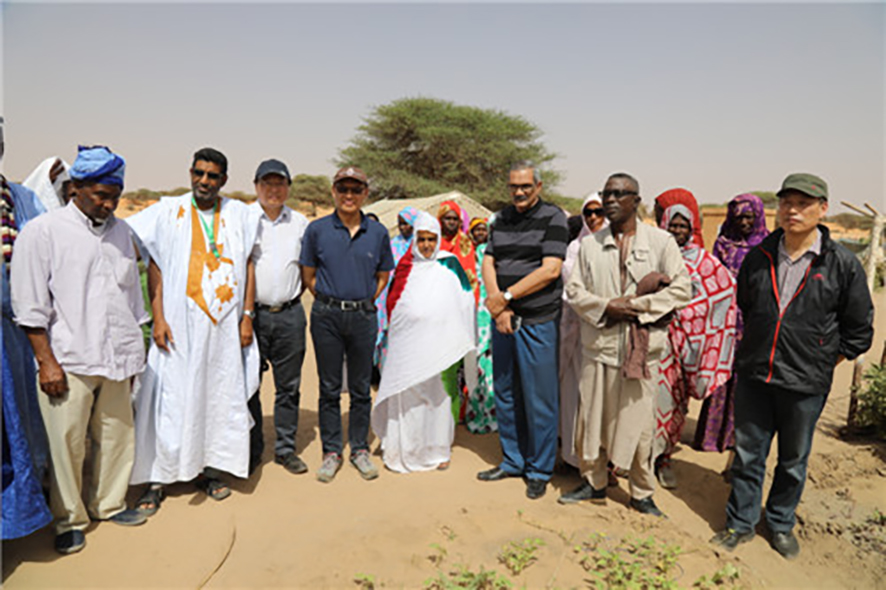
Fig. 1. Chinese scientific delegates in Africa.
2. Lessons from China’s Three-North Shelterbelt Program
China’s Three-North Shelterbelt Program (TNSP), launched in 1978, is one of the world’s largest ecological engineering projects. Spanning 13 provinces and planned over 73 years, it aimed to stop the expansion of deserts in northern China through afforestation, sand stabilization, and ecological livelihood improvements (Wang et al., 2013).
Once derided as overambitious, the TNSP has now restored millions of hectares of degraded land, reversed sand dune migration, and brought measurable economic benefits to rural communities. Its success is grounded in three key principles:
Local adaptation—interventions tailored to regional climatic and ecological conditions.
Integrated technologies—the use of straw checkerboards, shelterbelts, drip irrigation, and solar-powered systems in combination.
Ecological-livelihood synergy—integrating ecological restoration with poverty alleviation and community development.
This integrated logic forms the basis of China’s cooperation with African countries in implementing context-sensitive and sustainable approaches to desertification control.
3. Stories from the Field: China-Africa Green Cooperation
3.1 Mauritania: Reinventing the straw checkerboard
In Nouakchott, Mauritania’s capital, sand encroachment is a daily reality. Chinese researchers from the Xinjiang Institute of Ecology and Geography (XIEG), Chinese Academy of Sciences (CAS) worked with local counterparts to adapt the classic straw checkerboard technique to Mauritania’s wider, less cohesive dunes. By designing a multilayered, small-grid stabilization system, they succeeded in calming mobile dunes and protecting peri-urban areas.
Moreover, solar-powered drip irrigation systems were introduced, improving seedling survival rates to over 90%. Around the sand barriers, 15 village gardens were established, managed by local cooperatives. Women’s groups began producing dried fruits using nursery outputs, adding income and nutritional value to households.
This project went beyond environmental restoration, it reshaped local livelihoods and offered a tangible example of ecological development synergy.
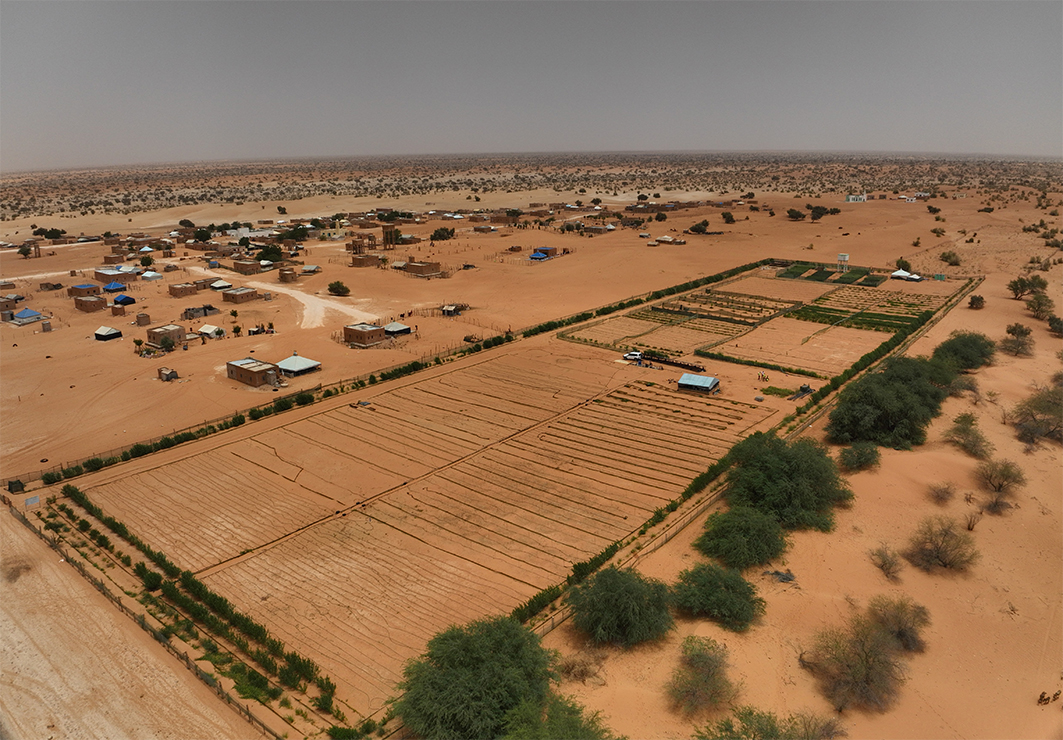
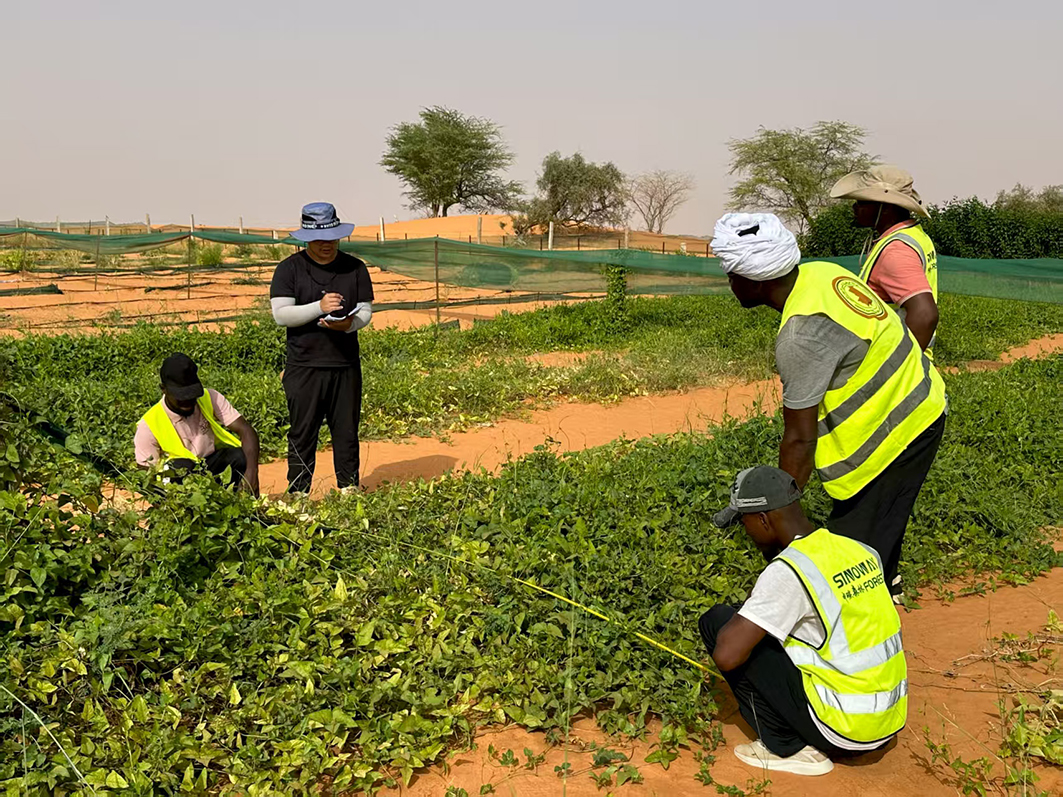
Fig. 2. Experimental field in Mauritania.
3.2 Ethiopia: Grassland restoration in Oromia
In Ethiopia’s Oromia State, the issue was not sand but shrub encroachment, where aggressive native species degraded grasslands and reduced livestock productivity. Chinese and Ethiopian teams co-developed a three-pronged strategy: clear the shrubs, reseed grass species, and implement rotational grazing.
Twelve resilient forage species were introduced from China. Initial skepticism was high, especially at customs, where the seeds were suspected of being invasive. After successful safety and environmental risk assessments, the project moved forward.
As of 2023, over 200 hectares have been restored, enhancing ecosystem functions and stabilizing pastoral livelihoods. The site now serves as a demonstration zone for East African grassland rehabilitation.
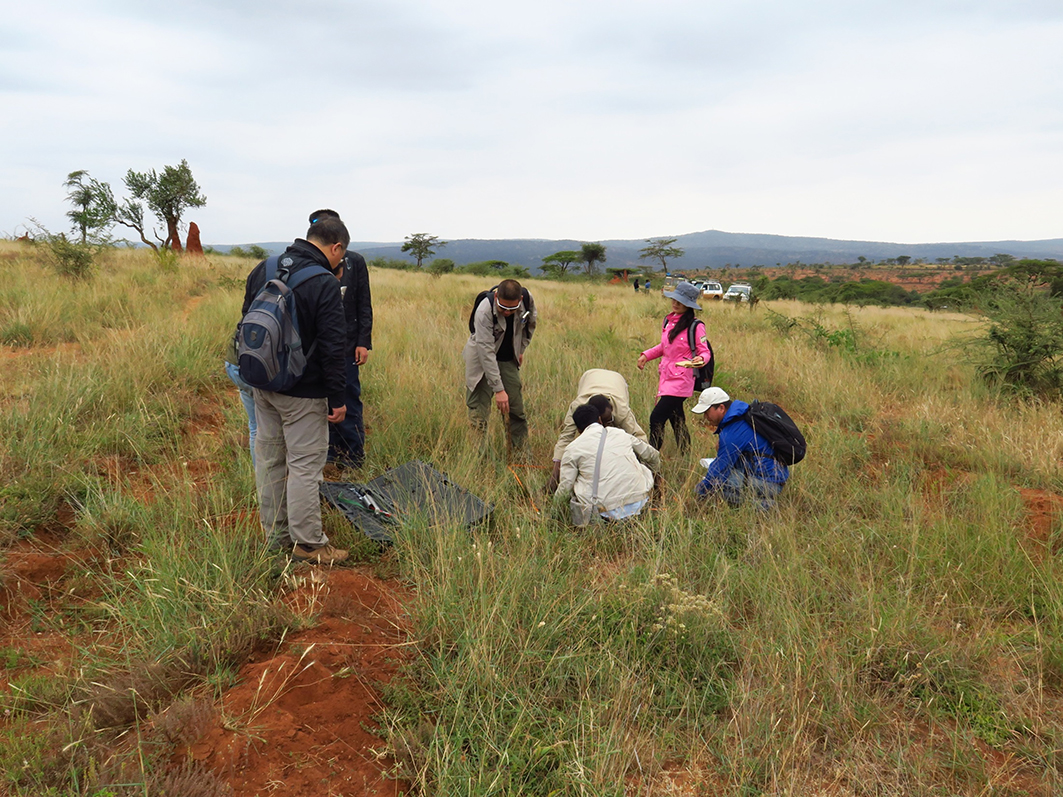
Fig. 3. Vegetation surveys by Chinese scientists and technicians in Ethiopia.
3.3 Nigeria: Wind erosion control through agroforestry
In northern Nigeria, wind erosion has long devastated farmlands. Chinese scientists introduced a shelterbelt model combining fast-growing trees (Casuarina), shrubs, and grasses to reduce soil erosion. The selection included economically beneficial species such as cashew trees, offering farmers both environmental protection and marketable yields.
The agroforestry system was co-designed with local farmers and has led to measurable improvements in soil quality, crop yield, and household income. This win-win approach exemplifies how ecological engineering can serve agricultural resilience and rural revitalization.
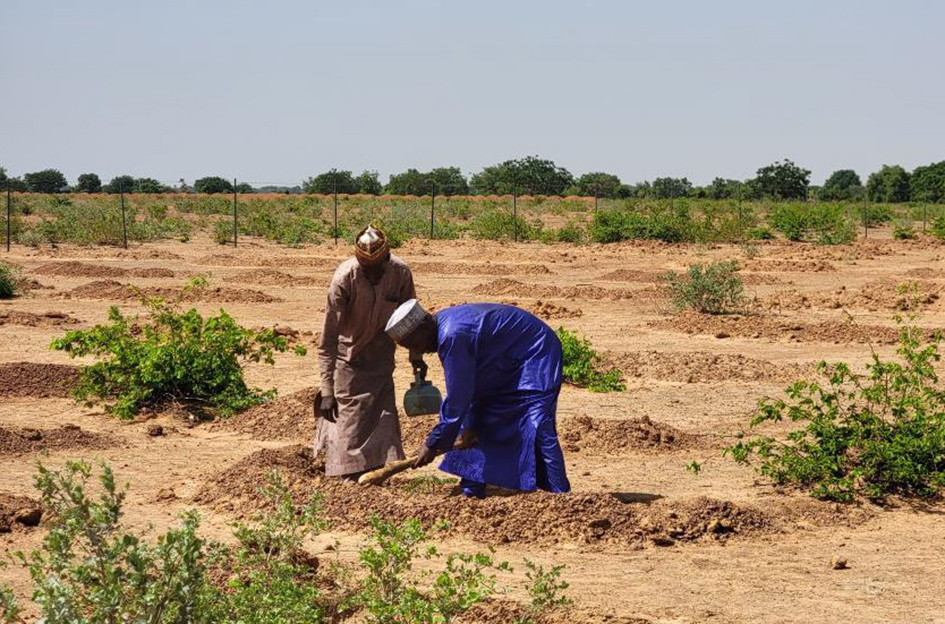
Fig. 4. Maintainers plant saplings at the site of a desertification control project.
4. From Projects to Partnerships: Institutionalizing Cooperation
What began as small-scale demonstration projects has evolved into a robust partnership framework. In 2017, XIEG and the Pan-African GGW Agency signed a memorandum to establish the Pan-African GGW Research Center. A joint research office was also set up in Mauritania.
Since then, technical workshops, student exchanges, and capacity-building programs have taken place both in Xinjiang and across GGWI countries. Chinese and African researchers are now co-publishing in academic journals and jointly applying for international ecological grants.
This transformation—from donor-recipient to co-developers—marks a significant shift in the global landscape of environmental governance. As Marcélan Sanu of the GGW Secretariat aptly stated, “We are not just borrowing China’s experience, we are co-developing new models of African environmental governance.”
5. Toward a New Ecological Governance Paradigm
The African Great Green Wall is more than a line of trees. It represents a shift toward integrated, transboundary ecological governance rooted in shared responsibility. China’s contribution extends beyond hardware—such as straw grids and irrigation systems—to include institutional logic and long-term development thinking.
China’s philosophy of linking “desert control—poverty reduction—community empowerment” offers a compelling alternative to fragmented, top-down interventions that have often failed in the Sahel (Wang et al., 2013).
As climate change accelerates and land degradation intensifies, models that combine science, policy, and social inclusion will become increasingly vital to global sustainability efforts.
6. Conclusion and Call to Action
The African Great Green Wall symbolizes humanity’s will to regenerate degraded ecosystems, fight climate instability, and foster sustainable development.
To further this vision, we call for:
● Enhanced multilateral partnerships, especially South-South cooperation, to expand the reach and impact of the proven ecological restoration methods.
● An African Green Wall Science Fund, to support cross-continental research and innovation.
● Innovative financing, including blended finance models and green bonds to sustain restoration efforts.
● Cross-regional knowledge exchanges, linking Sahara and Taklimakan desert researchers for mutual learning.
Let the success of straw checkerboards in China and solar-irrigated gardens in Africa inspire broader ecological solidarity. The time to act is now.
Epilogue: When the Sahara Shakes Hands with the Taklimakan
Once thought to be worlds apart, the Sahara and the Taklimakan deserts are now connected—by shared struggles, shared solutions, and shared dreams. What unites them is a green bond: the belief that even the harshest lands can host life, dignity, and hope.
Let us nurture this bond and sow the seeds of resilience, not just in the soil—but also in our common future.
References
Goffner, D., H. Sinare, L.J. Gordon. (2019). The Great Green Wall for the Sahara and the Sahel Initiative as an opportunity to enhance resil ience in Sahelian landscapes and livelihoods. Regional Environmental Change, 19, 1417–1428. doi:10.1007/s10113-019-01481-z
UNCCD. (2020). The Great Green Wall Implementation Status and Way Ahead to 2030. United Nations Convention to Combat Desertification. https://www.unccd.int/resources/publications/great-green-wall-implementation-status-and-way-ahead-2030.
Wang, F., X. Pan, D. Wang, C. Shen, Q. Lu. (2013). Combating desertification in China: Past, present and future. Land Use Policy, 31, 311–313. doi: 10.1016/j.landusepol.2012.07.010.
* To whom correspondence may be addressed. Email: dumy@ms.xjb.ac.cn (DU M.)
1 LEI Jiaqiang, researcher at the Xinjiang Institute of Ecology and Geography, Chinese Academy of Sciences, focuses on desertification control and sustainable land use in arid regions. His key achievements include developing advanced afforestation models and engineering shelterbelt designs for the Tarim Desert Highway. He is a recipient of the National 973 Project Award and the Xinjiang Science and Technology Progress Special Award, recognized for his innovative contributions to combating desertification.
2 DU Mingyuan, researcher at the Xinjiang Institute of Ecology and Geography, Chinese Academy of Sciences. His research interests focus on desertification mechanisms, sand-dust transport processes and local climate changes. Key achievements include establishing numerical models for wind and sand control in desert areas and soil erosion assessment models. He received the Progress Award from the Japanese Association for Arid Land Studies for research on climate change-human activity relationships in China’s arid lands.
Copyright © 2025 by the Chinese Academy of Sciences and published by the journal Bulletin of the Chinese Academy of Sciences. This article is licensed and distributed under the Creative Commons Attribution-NonCommercial-NoDerivatives license 4.0 as given at https://creativecommons.org/licenses/by-nc-nd/4.0/.

